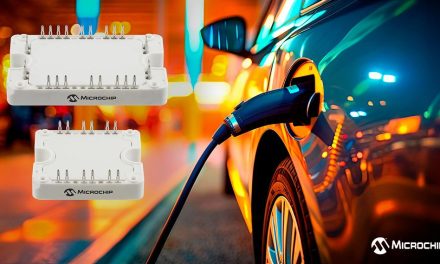 Infineon Technologies has announced that it has shipped its ten millionth high-frequency radar chip. The 77-GHz chips are used in radar-based driver assistance systems that recognise objects at ranges of up to 250m. Infineon estimates that in the year 2014 nearly 50% of 77-GHz radar systems in vehicles were equipped with Infineon technology.
Infineon Technologies has announced that it has shipped its ten millionth high-frequency radar chip. The 77-GHz chips are used in radar-based driver assistance systems that recognise objects at ranges of up to 250m. Infineon estimates that in the year 2014 nearly 50% of 77-GHz radar systems in vehicles were equipped with Infineon technology.
In a recent study, the market research firm IHS Technology declared Infineon the global market leader in 77-GHz chips, which is the standard frequency range for radar applications such as adaptive cruise control and collision warning. The first ten million of these radar chips from Infineon were primarily built into premium and luxury vehicles over the past six years. Infineon anticipates increasing demand and expects that, within the next year, up to ten million radar chips will also be used in mid-sized and compact cars. This means that statistically one out of every twenty cars will be using a driver assistance system with a 77-GHz radar chip from Infineon.
The market research firm Strategy Analytics also confirmed this trend towards safety systems in cars. They expect that in the next five years applications such as distance warning systems and automatic emergency braking will grow by more than 25% annually. This growth is in part attributable to the rating scheme from the independent organisation Euro NCAP (European New Car Assessment Programme), that reviews the safety of new vehicles sold in Europe. To achieve the highest rating of five stars a new car must have a radar-based driver assistance system. Strategy Analytics forecasts that of the 105 million new vehicles expected to be built in 2020 more than 20 million will use a radar-based distance warning system. That would mean that about 20 percent of all new vehicles worldwide would be equipped with such a system.
”Our chips make driver assistance systems increasingly accurate and more cost-effective,” said Jochen Hanebeck, president of the Automotive division at Infineon Technologies. ”Radar-based driver assistance systems using Infineon chips now are becoming the standard in mid-range and compact cars. They are an important growth market for Infineon. Our high system knowledge and close cooperation with leading system suppliers and car manufacturers around the world are key elements to our success,” said Hanebeck.
Broad product portfolio for radar-based driver assistance systems from short to long vicinity range
Even in poor visibility situations, radar chips in the 77-GHz range make it possible for vehicles to ”recognise” other road users at a distance of up to 250m (approx. 275 yards). This allows a car to indicate a hazardous traffic situation in time and brake automatically. If radar-based driver assistance systems continue to become widely adopted, then those dreaded collisions you get when stuck in a traffic jam – especially around vacation time – could well be a thing of the past.
In addition to 77-GHz radar chips for active safety systems, Infineon also offers radar chips in the 24-GHz frequency range for distances up to 100m (approx. 110 yards). 24-GHz radar chips are most often used to monitor the blind spot. With them, the radar system alerts drivers to vehicles behind them when passing or changing lanes. When parking, the radar detects cross-traffic in the rear and prevents collisions.
How radar technology works in the car
A vehicle driver assistance radar system sends out radio-frequency electromagnetic waves, which are reflected back by vehicles or other objects ahead. Radar chips of Infineon send and receive these high-frequency signals and pass them on to the radar electronic control unit (ECU). The radar ECU then determines the distance of the car to other vehicles and their speed in order to warn the driver in good time and to initiate the braking maneuver in case of emergency.
“Made in Germany” innovation
Ever since 2009, Infineon manufactures its radar chips in Regensburg, the company’s innovation center for high frequency technology in Germany. Here the radar chips are integrated in special chip packaging and tested. The use of the silicon germanium manufacturing technology developed by Infineon helps make radar sensor systems that are more compact and cost-effective.


